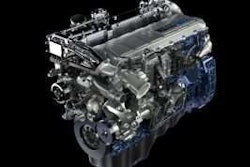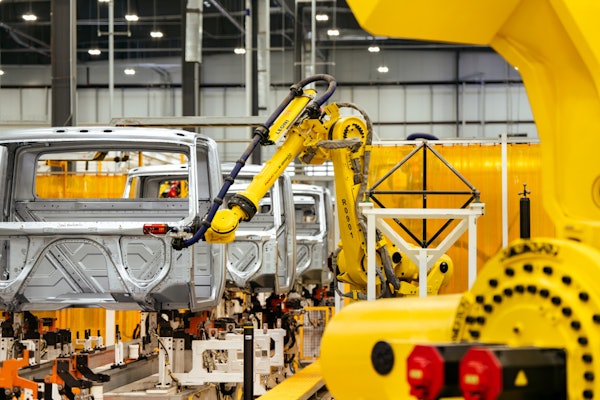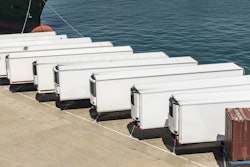Every dealer wants to earn its customers’ trust. But trust isn’t simply given; it is earned through quality work.
In a service department, one way to earn a customer’s trust is by being forthright and proactive in diagnosing vehicle breakdowns, and providing immediate service response times (SRT).
SRTs let customers know how long their trucks will be down, which helps them build contingency plans to keep their businesses moving.
This means SRTs don’t just have to be promptly released — they also have to be correct. What reason does a customer have to trust you if quote him a repair at six hours and it lasts four days?
Those mistakes hurt your bottom line.
Quoting a customer six hours labor means they’ll only pay for that time. Days two through four are on you. Trucks sitting in bays also limit the number of additional repairs you can get through your service department, angering customers and hurting service sales.
Unfortunately, as important as accurate SRTs are in the marketplace, they remain a tough concept for dealers to master.
“[SRTs] are one of the core issues to running a service department, but I do think dealers struggle with them,” says Mark Martincic with dealer consulting group KEA Advisors. “There is little consistency in SRT times and how they are handled.”
If your dealership struggles with SRTs, look into the process of how they are created and evaluated in your service department. It’s easy to blame a technician when a two-hour job runs long, but in the end it’s not always his fault.
An initial step to improving SRTs in your dealership is making sure you’re using the right ones in the first place. That may sound obvious, but SRTs can vary significantly with one small component alternation to a repair process, says Martincic.
OEM-provided SRTs “don’t always have time studies done on specific operations,” he says. OEM times are created by finding the average — or, standard — time expected for a simple repair, and are built to reflect that repair alone.
“On the customer-pay side we tend to bundle things,” Martincic says. “A customer may come in for an [engine] overhaul and he’ll be quoted a specific SRT for that overhaul, but then as it is being done he will need something else that won’t be included in the SRT.”
Adding the new repair SRT to the current overhaul is one option, but that will create an overhaul SRT that is hardly accurate. The first repair will affect the SRT of the second repair, and vice versa.
In situations like this, Martincic advises dealers to document the time it actually takes their technicians to complete the expanded repair and note that with the SRT listed in the OEM software.
Michael Riemer, vice president products and channel marketing at Decisiv, says the software his company builds for service providers can be modified to include more accurate SRTs. Its OEM software also includes third-party estimates from Motor “for benchmarking estimates and invoices against the work being done.”
There are more than 14,000 OEM-provided service response times in the heavy-duty industry. You can’t update them all, Martincic says, but if you start with a handful of your most common repair orders you can slowly create a better list of estimates for your customers.
Adds Riemer, the more a dealer “can standardize its business operations the more customers will have a consistent service experience.”
Another important step to managing SRTs is making sure your technicians have everything they require to complete a repair when given a job. This includes parts, tools and the SRT itself.
Good technicians like to be challenged, and giving them an SRT before they start a job lets them know what’s expected. Hourly technicians will understand they need to complete the repair in the SRT or faster to maintain a quality proficiency rate; while flat-rate techs will see an SRT as goal they’ll want to beat.
Doug Pence, service manager at Highway Motors in Harrisonburg, Va., says his service department spent the last two years improving its SRT process. This spring it started to pay off, as Highway Motor’s technician efficiency rate in April was a staggering 98.9 percent.
Providing techs SRTs ahead of service work was a key to registering that number, he says. “When the technicians know exactly what they have in that estimate it gives them something to strive for.”
Once a tech gets started, having the parts and tools he needs at his disposal allows him to work through the repair without leaving the bay. Pence says Highway Motors immediately checks on parts availability after diagnosing a vehicle for repair, and doesn’t dispatch a technician to a bay until he has everything he needs. If he requires an additional part while working, a parts counter person brings it to him.
“My techs do not go to the counter anymore,” he says.
One other thing to remember when using SRTs is that not all technicians are created equal. A 30-year veteran can probably replace a water pump faster than the new guy. Tracking the performance of your technicians against SRTs can help identify who is consistently the best.
“If an SRT says a job should take eight hours and one of your guys does it four [hours], he’s probably a pretty good technician,” says Dave Costantino, director of the Commercial Vehicle Group at Mitchell 1.
Noting that in your software will give you background in case you want to adjust that SRT when that technician is given that repair again, Costantino says.
Pence says that’s what it takes: a constant, relentless process. SRTs won’t fix themselves.
“There’s no magic bullet; there’s not just one thing to do,” he says. “You have to change the mindset of everyone involved. The last two years have been a work in progress, but now our guys really have it down.”









